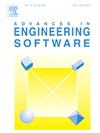使用结构光模拟和基于机器学习的覆盖预测生成扫描点云
IF 5.7
2区 工程技术
Q2 COMPUTER SCIENCE, INTERDISCIPLINARY APPLICATIONS
引用次数: 0
摘要
虽然已经提出了几种方法来生成扫描点云,即包含各种逼真的人工制品的点云,如果相应的真实物体被真实数字化,就会出现这些人工制品,但大多数方法仍然没有考虑到真实采集设备中发生的复杂现象。本文提出了一种将仿真与机器学习相结合的人工生成点云的新方法。从要虚拟扫描的对象的CAD模型和扫描配置开始,结构光模拟首先允许重建初步的3D点云。然后,使用覆盖预测网络来预测如果要进行实际采集将被采集的区域。预测模型的训练来自于一个大型的扫描配置数据库和真实扫描的点云。最后进行滤波和裁剪,对生成的点云进行微调。实验证实,该方法可以生成非常接近真实扫描仪所获得的点云,如几个表征局部和全局相似性的指标所示。这种虚拟扫描技术能够快速生成大量逼真的点云,特别是与使用物理采集系统所涉及的耗时和昂贵的过程相比。这在访问现实点云数据库方面开辟了新的视角,特别是对于各种基于人工智能的方法的开发。本文章由计算机程序翻译,如有差异,请以英文原文为准。
As-scanned point cloud generation using structured-light simulation and machine learning-based coverage prediction
Although several methods have been proposed for generating as-scanned point clouds, i.e. point clouds incorporating various realistic artefacts that would appear if the corresponding real objects were digitized for real, most of them still fail to take into account the complex phenomena that occur in a real acquisition devices. This paper presents a new way of artificially generating point clouds by combining simulation and machine learning. Starting from the CAD model of the object to be virtually scanned and from a scan configuration, structured light simulation first allows reconstructing a preliminary 3D point cloud. Then, a coverage prediction network is used to predict the regions that would be acquired if a real acquisition was to be done. The prediction model has been trained from a large database of scan configurations and point clouds scanned for real. Finally, filtering and cropping are performed to fine-tune the generated point cloud. Experiments confirm that this method can generate point clouds very close to those that a real scanner would acquire, as shown by several metrics characterizing both local and global similarity. Such a virtual scanning technique enables the rapid generation of large quantities of realistic point clouds, especially when compared to the time-consuming and costly processes involved in using physical acquisition systems. This opens up new perspectives in terms of access to realistic point cloud databases, in particular for the development of various AI-based approaches.
求助全文
通过发布文献求助,成功后即可免费获取论文全文。
去求助
来源期刊

Advances in Engineering Software
工程技术-计算机:跨学科应用
CiteScore
7.70
自引率
4.20%
发文量
169
审稿时长
37 days
期刊介绍:
The objective of this journal is to communicate recent and projected advances in computer-based engineering techniques. The fields covered include mechanical, aerospace, civil and environmental engineering, with an emphasis on research and development leading to practical problem-solving.
The scope of the journal includes:
• Innovative computational strategies and numerical algorithms for large-scale engineering problems
• Analysis and simulation techniques and systems
• Model and mesh generation
• Control of the accuracy, stability and efficiency of computational process
• Exploitation of new computing environments (eg distributed hetergeneous and collaborative computing)
• Advanced visualization techniques, virtual environments and prototyping
• Applications of AI, knowledge-based systems, computational intelligence, including fuzzy logic, neural networks and evolutionary computations
• Application of object-oriented technology to engineering problems
• Intelligent human computer interfaces
• Design automation, multidisciplinary design and optimization
• CAD, CAE and integrated process and product development systems
• Quality and reliability.
 求助内容:
求助内容: 应助结果提醒方式:
应助结果提醒方式:


